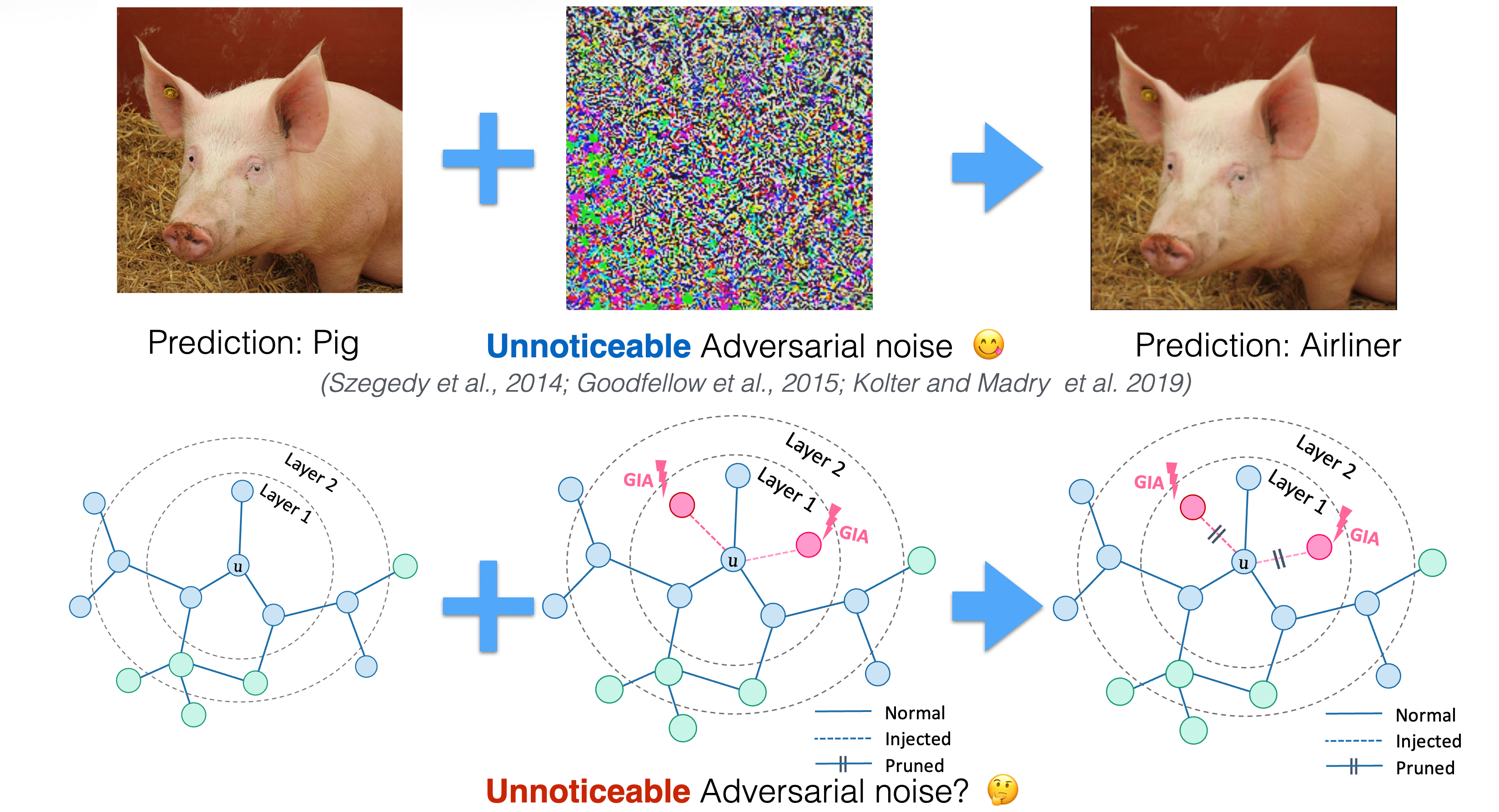Understanding and Improving Graph Injection Attack by Promoting Unnoticeability
Recently Graph Injection Attack (GIA) emerges as a practical attack scenario on Graph Neural Networks (GNNs), where the adversary can merely inject few malicious nodes instead of modifying existing nodes or edges, i.e., Graph Modification Attack (GMA). Although GIA has achieved promising results, little is known about why it is successful and whether there is any pitfall behind the success. To understand the power of GIA, we compare it with GMA and find that GIA can be provably more harmful than GMA due to its relatively high flexibility. However, the high flexibility will also lead to great damage to the homophily distribution of the original graph, i.e., similarity among neighbors. Consequently, the threats of GIA can be easily alleviated or even prevented by homophily-based defenses designed to recover the original homophily. To mitigate the issue, we introduce a novel constraint -- homophily unnoticeability that enforces GIA to preserve the homophily, and propose Harmonious Adversarial Objective (HAO) to instantiate it. Extensive experiments verify that GIA with HAO can break homophily-based defenses and outperform previous GIA attacks by a significant margin. We believe our methods can serve for a more reliable evaluation of the robustness of GNNs.
PDF Abstract ICLR 2022 PDF ICLR 2022 Abstract

 Reddit
Reddit
 GRB
GRB